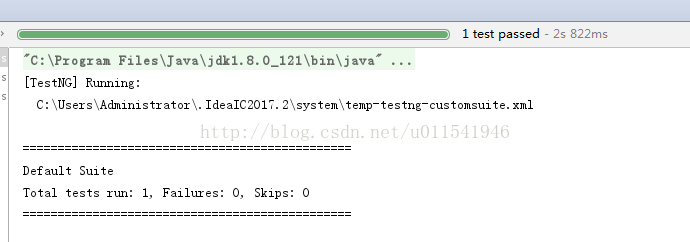这篇先来介绍@Test注释下的一个属性-timeOut。字面意思就是超时判断,详细点说。
如果哪个测试方法需要监听执行的时间,那么就可以考虑采用timeOut属性。
例如,实际的接口测试中,加入登录接口时间不能超过3秒中。
下面来看看如何监控这个方法如果运行时间超过3秒就抛出异常。
package com.java.learn;
import org.testng.annotations.Test;
/**
* create by Anthony on 2017/10/31
*/
public class TimeoutTest {
@Test(timeOut = 3000)
public void loginTest(){
try{
Thread.sleep(3100);
}catch (InterruptedException e){
System.out.println(e.toString());
}
}
}
运行下这个Testng测试用例,看是否抛出异常。

我们来更改下Thread.sleep(2800);再次运行,看看效果。

总结:当某些测试用例需要测试运行时间(一般在接口测试中会遇到)的时候,利用@Test这个注释中的timeOut属性,可以帮你做到监控时间的功能。